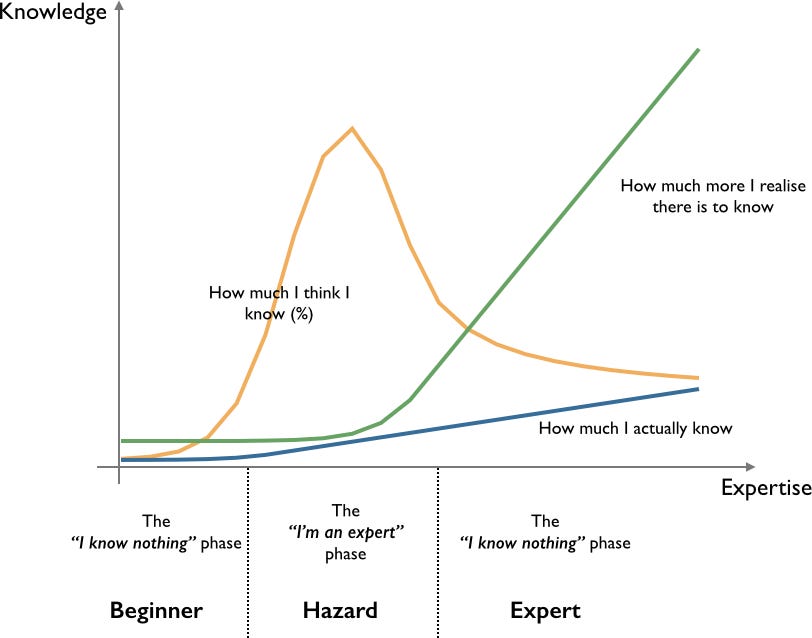20251109
“And one of the big things I’m really starting to worry about is talent. Specifically, the tightrope walk between cognitive augmentation and cognitive atrophy. Because I’m watching this play out in real time, and I’m not sure we’re getting the balance right. Actually, I’m fairly certain we’re not. […] But what we’re not talking about, what we’re not worrying about nearly enough, is the other side of the coin. If we’re running at speed at this, if we’re pushing everyone to use AI because we think it’s some sort of panacea to every business challenge we have, what about atrophy? What about the erosion of expertise, of knowledge, of critical thinking, of the kind of deep collaborative thinking that actually produces breakthrough work? […]” Zoe Scaman
People: Tiktok detectives. Into a DOGE employee mind. Slop as a way of life. Futureproofing one’s kids. Tell ‘em you love ‘em. Learning and innovating. 9 things in 90 years (PDF).
Tech: 90% of code will be AI’s… won’t it? Bone oyster glue. Tech trends 2026. Dutch gov and Chinese chips.
Business: Indigenous people and tariffs.
Futures: Designing with Futures.
AI: and childhood in China. And therapy. And cultural memory (in stone). Permanent underclass.
Random: Moving off the Map: How Knowledge of Organizational Operations Empowers and Alienates

Dancing with Chaos
Jenny had always been drawn to the absurdity of reality, a universal truth she couldn’t shake even in the stark fluorescent light of her cramped office, where papers exploded around her like confetti at a very uninspired party. She was a project manager at a tech startup dabbling in AI, trying to streamline operations that seemed to engage in a chaotic dance of inefficiency. One day, she leaned over her cluttered desk and asked her new AI assistant, aptly named Coffee (because it would only serve to wake her up), for a simple project update.
“Organizational chaos model suggests you sort files by the most obscure criteria you can think of,” Coffee buzzed back, “perhaps by emotional resonance?”
Here, dear reader, is a lesson in decision-making: if you ever find yourself relying on AI to sort out your life, expect your paperwork to become more tangled than a cat in yarn.
As the tides of digital transformation swept through her firm, Jenny’s colleagues were poring over the latest development in mental health support. A spunky AI named DeepSeek had become the confidante of choice for many in the office, soothing the existential musings of the stressed employees whose balance sheets resembled steep cliffs. But conversations were often met with an eerie silence, a lack of critical counterpoint that left them spiraling into rounds of self-reinforced negativity. “Maybe we need an AI that tells us to put down the ice cream and pick up a book,” Jenny sighed.
Meanwhile, the online landscape continued its transformation; reports of infidelity were circulating faster than office gossip. The PIs—and here’s a cheeky aside—were becoming the reality TV stars of modern misadventures. Could Jenny leverage this scenario for her next project? Perhaps she could introduce an AI that would not only help people confess their transgressions but write fan letters to alleviate the social repercussions. “Dear Hannah, I’m sorry I cheated. But you’re great, just like this pizza I ordered!”
Her imagination drifted to cultural events, like the Venice Exhibition that promised to merge ancient methods with modern technology, where an Armenian pavilion declared a future built on digital heritage that could withstand seasonal storms of change. What if Jenny’s AI could repurpose her company’s chaos into something beautiful, making decisions inspired not by disorganization but by rich cultural dialogue?
Glancing at an email from Wu Ling, who raved about her son’s new AI-powered learning companion, Jenny couldn’t help but wonder about the implications. While parents scrambled to hand over their children’s education to robots, were they inadvertently denying them the chance to weed through the chaos of human experiences? After all, there was a delicate dance between reliance on technology and maintaining one’s ability to think critically, a fact her own company struggled to embrace.
But there was one more piece of the puzzle. Just beyond her window lay the vibrant skyline where the Standing Buffalo Dakota Nation was breathing new life into ancient trade routes. Revival and self-determination emerged within the shadows of an economy teetering on the brink of collapse—this was what it meant to connect past and future, not via tangled systems but through clarity of purpose.
It struck Jenny then, like one of those lightbulbs that flicker dimly before exploding with brilliance. Perhaps she could rally the team, fuse AI efficiency with relational intelligence, and create a platform to help companies not just sort their chaos but learn from it. “We’ll ensure AI won’t turn us into a permanent underclass of perplexed mutes,” she thought. “After all, we’re meant to build bridges, not walls!”
So, armed with optimism, caffeine, and the faintest whiff of adventure, Jenny began to map out her dream project. The chaos was indeed there, wild and unfiltered, just waiting for someone to dance with it.

